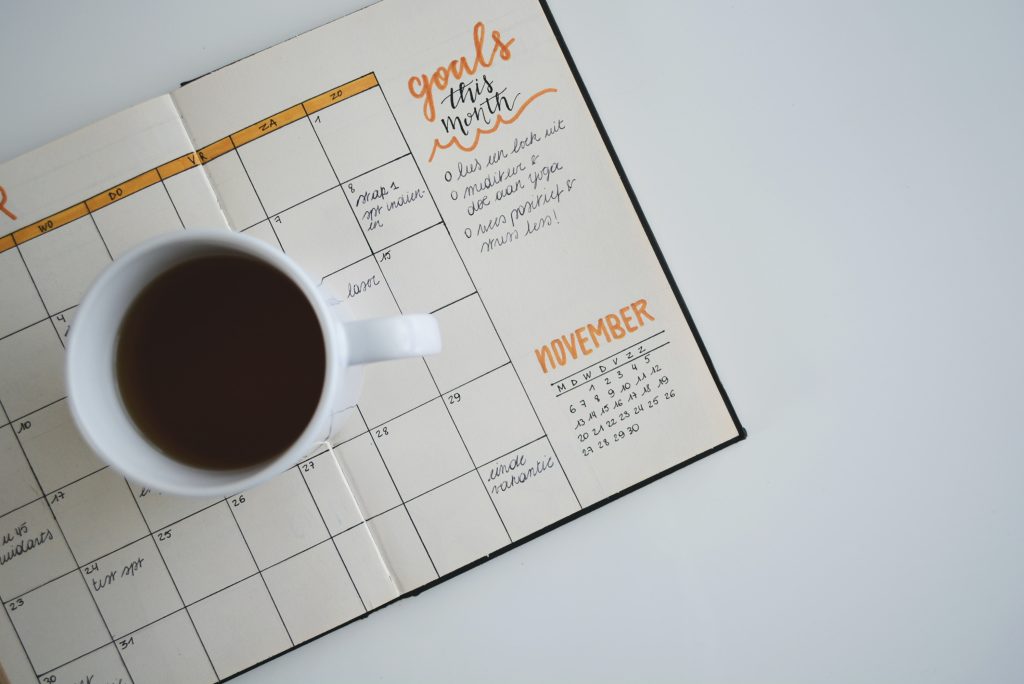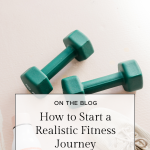Starting Strong: 5 Steps to Start Your Realistic Fitness Journey
So you’ve decided you want to start a realistic fitness journey! Great! But now what? Where exactly do you start? With so many options available these days, it’s hard to decide on the right approach. Maybe you’ve tried establishing healthier habits before, but they never really stuck. Well, not this time. Keep reading to discover ways to start strong and get a kickstart on a realistic fitness journey to help you reach your goals!
Why Most People Fail in Their Fitness Journey
We’ve all been there and decided we want to get serious about our fitness goals. You start strong jump right in, and go all out. And maybe you’re consistent for a few weeks or months and you see some initial results, but then life gets in the way, or you get burned out and eventually fall off. It happens. These are the common mistakes people make when starting a fitness journey.
Not Setting Clear and Realistic Goals
Just saying, “I want to exercise to lose weight,” is great, but it lacks specificity. How are you going to lose weight? What kind of exercise are you going to do? Do you even like doing that form of exercise? A lot of people jump into running as a form of exercise in the beginning. They then quickly realize they hate running. So guess what happens, they quit! But why not start by choosing a form of exercise you actually enjoy? You’re way more likely to stick with it if you enjoy it. Also, how much weight do you want to lose? And what’s your timeline? How will you measure your progress? These are all questions to answer before you get started.

Not Establishing a Plan
Just like running, people join gyms with the intention of working out. This is great, but gyms can be intimidating, especially for someone just starting their fitness journey. What do you do when you get there? Most people just choose a cardio machine and stick to things they’re comfortable with. But then what? Just like running, you either realize you’re not enjoying what you’re doing or you just get plain bored. And we all know what happens next…
Making Unrealistic Plans
Maybe you do have a plan. You will go to a group fitness class 5 times per week and then run on the other 2 days. While it’s great to have a plan, doing too much too soon can really backfire. If you’re just starting out on your fitness journey or haven’t been active in a while, committing to exercising 7 days a week is unrealistic. And remember, we’re trying to start a realistic fitness journey we can stick to. Jumping right into high-intensity exercise can also be a lot of physical and mental exercise. You’re likely going to get burned out or possibly injure yourself.
Steps to Starting a Realistic Fitness Journey
So you may be wondering, ok, so how do I do this the right way? Great question! Your fitness journey is just that, a journey. It takes time. But the most important part is finding the most realistic path for your lifestyle and goals.
Step 1: Set Realistic Goals
So, we already went over what can happen if you start your journey without clarity on your goals. But let’s go over how to set the correct goals. Before setting any goals, I always suggest establishing your “why.” This helps you decide if this goal is even important and why. If your goal really means something to you, you’ll be more committed to achieving that goal. So ask yourself these questions:
Why is achieving this goal important to me?
How will my life be different when I achieve this goal?
Next, you’ll need to clarify your goals. To do this, you’ll set SMART goals. SMART goals stand for Specific-Measurable-Attainable-Relevant-Time-Bound.
S- Specific– what exactly are you trying to achieve? Be clear and specific.
M-Measurable-Your goal must be trackable, allowing you to measure your progress.
A- Attainable– Your goal should be challenging but possible.
R- Relevant– What is your reason for wanting to achieve this goal? Why is this important? Does it align with your lifestyle and values?
T- Time-Bound– Set a deadline to hold yourself accountable.

So instead of simply saying, “I’m going to exercise to lose weight,” your goal would change to “I will lose 20 pounds in 5 months to improve my health. I will do this by strength training 3 days per week, taking daily 30-minute walks, and reducing my caloric intake by preparing healthy meals at home. At this rate, I can lose 4 pounds per month (1 pound per week).”
- Now, your goal is specific: lose 20 pounds in 5 months.
- You have a way to measure your progress: 1 pound per week or 4 pounds per month.
- The goal is attainable. It will be challenging but also realistic for your lifestyle.
- You’ve set a relevant goal. You’re losing weight to improve your health.
- Finally, it is time-bound: you have a deadline of 5 months to hold you accountable.
Step 2: Start Where you Are
Remember, we are looking to start a realistic fitness journey. It means it has to fit within your current lifestyle, not the one you hope to have one day. To do this, you have to start where you are! It’s best to start slowly rather than over-committing and getting burned out. Look at your life at this current moment and find small ways you can add healthier habits. Maybe you realistically only have 2 evenings each week that you can dedicate to working out. So rather than trying to change your schedule and rearrange your life to work out 4 evenings, just start with 2. Maybe you have 30 minutes during your lunch break to take a walk. Perfect, start there.
It doesn’t have to be all or nothing. Even if ideally you would like to work out 5 days per week, maybe it’s just not in the cards right now, and that’s ok. It’s better to do the 2 days than nothing at all. And then, eventually, you can start adding other forms of exercise, such as your daily walks.
Step 3: Establish a Game Plan
You’ve heard it before: fail to plan, and you plan to fail. But this truly applies to your fitness journey. Not having a plan can leave you at the gym spinning your wheels and not getting any results. And that leads to you feeling discouraged and giving up. So, sit down and come up with a plan. Maybe you decide to take a group fitness class a few times per week, purchase a program, or hire a personal trainer. Whatever you decide, it’s always better to have a plan rather than just going in blind.
Step 4: Identify Obstacles that Will Get in Your Way
Life is always going to get in the way. We’re all busy and have other obligations. It’s hard to balance work, family, friends, and self-care and add time to exercise on top of that. But that’s the thing, life is always going to be happening. It’s up to you to identify things that will get in your way and have a plan for when they do. What happens if your schedule changes one week? Or what do you do when heading out to your exercise class and seeing your partner on the couch drinking wine? Or what happens when your friends invite you to dinner, but you’re committed to making healthy meals at home? It’s always good to foresee obstacles and have a plan in place.
How To Plan for Obstacles
If your schedule changes that week, maybe you can look at the group fitness schedule and pick another class on a different day or time. Or, rather than going to the gym, you might work out at home or go for a walk during your lunch break.
When you’re tempted to veg out on the couch with your partner, maybe you ask them to come to the gym with you. Or at least explain your goals to them and why they’re important to you and ask for support.
When you want to stick to your healthy eating habits but want to be social, you can suggest hosting a girls’ night at home and finding a new recipe to make together. You can also suggest a restaurant that has healthy options on the menu. Life is meant to be lived, but you shouldn’t sacrifice the commitments you’ve made to yourself.
Step 5: Find Support to Keep you Accountable

To start a realistic fitness journey, you must surround yourself with people who want to see you succeed and support you. Tell your friends and family your goals. Ask that they hold you accountable or even join you! Join a group fitness class or an exercise club. There are plenty of groups that meet to go for runs or hikes. Try sites such as :
Class pass allows you to buy credits to use at different local fitness studios. This is perfect if you want to try a few different studios to find something you like before committing to a membership. If you travel frequently, this is a great option as you can filter studios by your current location!
Meetup.com allows you to find groups of people in your area with similar interests. For example, if you’re interested in hiking but don’t necessarily want to venture out alone, you can find groups of people in your area who meet for hikes!
Sometimes, starting new activities is intimidating, but having the support of a group makes it less scary. Hire a personal trainer or a coach to help you plan your workouts and hold you accountable for showing up for your sessions. You’re way more likely to show up if you know someone is there waiting for you!
It’s a Journey!
You’re going to try new things that you’ll end up hating. You’re going to have setbacks and failures. Life will get in the way and knock you off your routine. But the most important thing is staying in tune with your goals and your “why”. Remember why you started this process in the first place and how achieving your goals will change your life. You’ve got this! If you need extra support or guidance on getting a strong start on your realistic fitness journey, don’t hesitate to schedule a free consultation!







